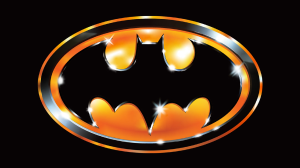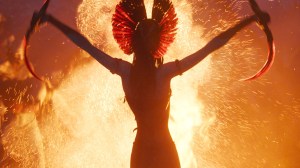Filmmaker Lee Cronin earned a breakout horror hit with last year’s The Hole in the Ground, landing himself not only on a number of lists about the best horror films of the year, but also earning the attention of genre director Sam Raimi. Due to the film’s effectiveness, Raimi knew that Cronin would be the perfect person to enlist for his Quibi series 50 States of Fright. While it might have been challenging for some filmmakers to adapt their sensibilities to short-form content, Cronin has a number of shorts his name, allowing him to easily shift into the short-form world. Cronin’s episodes of the Quibi series, “13 Steps to Hell,” are now available on Quibi.
Videos by ComicBook.com
50 States of Fright explores stories based on urban legends from every state, taking viewers deeper into the horrors that lurk just beneath. This horror anthology series launched in the spring, showcasing stories from Michigan, Kansas, Oregon, Minnesota, and Florida. New tales will be released from Iowa, Washington, Colorado, and Missouri on a weekly basis.
ComicBook.com caught up with Cronin to talk about his episodes, telling creepy stories his whole life, and what to expect from his upcoming Evil Dead Rise.

ComicBook.com: I was a big fan of The Hole in the Ground, so I’m curious about how you got involved in 50 States of Fright?
Lee Cronin: Thank you for saying that about The Hole in the Ground. That was the beginning of the journey, really, like everything in the film business, there’s a kind of squiggly route, for want of a better description, to how you end up doing what you want to do.
After The Hole in the Ground plays at Sundance at the beginning of last year, at the beginning of 2019, I was fortunate enough for Sam Raimi to see my movie and then to have lunch with him to talk about that movie, the movie I made, and things I wanted to do and things that he was looking at doing. Through that, Evil Dead came up in conversation, and I started going on a journey with Sam and his colleagues, and developing and moving Evil Dead forward for a new adventure, a new phase.
During that process, Sam was also getting 50 States of Fright into pre-production and off the ground and looking for filmmakers, so he very kindly asked me if I’d be interested in directing one of them. At first, I wasn’t sure if I wanted to do the short form again, but then there was this very interesting script set in Washington state. It appeals to me, it appeals to my sensibilities, it appealed to such stories that I like to tell and stories that I like to watch. Next thing I knew, I found myself involved.
Since you grew up in Ireland, obviously you weren’t familiar with this specific, local legend, so once you read the script, did you do much investigating into where the legend came from?
Yeah, I did. I loosely knew the myth because I’d always be reading strange, tall tales, as Sam would say in the opening voiceover for 50 States. I’d always be interested in those types of things. As much as I may not have grown up in the States or directly known these myths, what I like about those types of stories is they’re universal, especially this particular episode. It feels like if it didn’t happen in Washington state, it could’ve happened in the outskirts of a small town that I grew up in in Ireland. There’s not necessarily anything [specific] about it. It’s about people, and it’s about, in a small way, about those experiences they have. Even if there was no horror in the story, it’s about a little girl who’s suffering from grief. All of those things are universal.
I think, even in my own work, what I’m most interested in is any town, any time, any place. I’d say the same about The Hole in the Ground. It didn’t have to be set in Ireland. It didn’t even have to be set in the now. It could be set in the dark corners of some other country in 1850. Could be the same story about a mother and a son in a myth book.
Then I did read a little bit more about the myth, but I was more focused on what Sarah [Conradt] had written than necessarily trying to tick all the boxes of the myth that exists. I think the whole idea of myths, particularly in stories and fables, is those things are passed along. This is like a campfire tale. They change a little, and they adapt depending on who the storyteller is. I was more focused on what Sarah had written than necessarily ticking all the boxes of the original cemetery story.

Speaking to your interest in the universality of these stories, I was curious about your own storytelling upbringing. How do you feel specifically having grown up in Ireland impacted you as a storyteller?
I think it did quite a lot. It all depends where you grow up and the world that you grow up in. I was exposed to a lot of horror movies at a young age. I grew up in a small town that both had a little urban center but also plenty of countryside and interesting things around us to explore. I think growing up in Ireland, as well, we’re renowned as being tellers of tall tales and campfire stories and creepy tales and ghost stories and all this stuff. For me, that short-form storytelling, which works so well for 50 States, felt a little bit like second nature. It felt like the stories I’d be sharing with my friends to freak them out when I was six years old.
I do like that you’re saying when you were six years old you were telling people these stories. Whereas other people would be like, “When I was a teenager,” you’re like, “Nope, sorry, see you later Goosebumps, I’m going right for these terror tales.”
You got to start young. I remember being really young and always was a big fan of Ghostbusters and even the cartoon, the Real Ghostbusters. I remember always trying to make things from those. I remember even making paper ghosts that I would weigh with coins on the bottom, that I could fly down the stairwell in my house on a string if someone came in. I was always trying to freak people out. I don’t think I succeeded a whole lot, but I certainly endeavored to.
Being a fan of Ghostbusters means you were interested in the playful side of horror stories, do you remember the first time you saw an “adult” horror movie that made you fall in love with the genre?
I wouldn’t say I loved any of it because it all terrified me. The first horror experience I remember was Jaws, and specifically was Ben Gardner’s head coming out of the boat hull, and scaring the crap out of Richard Dreyfuss and scaring the crap out of me in return. I was pretty young when I saw that. I didn’t understand what was happening. That changed my idea of what entertainment could do. It wasn’t all sweetness and light.
In terms of a fully formed memory of watching a horror movie from beginning to end, and it impacting upon me, was The Shining, which I saw when I was eight or nine years old. The majority of it went over my head. Something primal in that movie got under my skin and terrified me for nights on end afterward. That was definitely a big influencing factor, as well. That was probably the moment, in terms of not just a moment in something, but the overall cumulative effect of a movie on me.
Speaking more specifically to shooting “13 Steps to Hell,” where did you actually shoot it? I live in Washington so it felt very familiar, but I wondered how the environment and landscape of this part of the world might have influenced your vision of telling this story, as opposed to what you might have originally been picturing.
That’s a really good question. I think that question is probably more useful for other filmmakers. The reason is the show was shot in Vancouver, in and around Vancouver. For me, I was right next door to the same landscapes as you would have in Washington state, very similar. So, for me, actually, I was able to step into an almost identical world. But then within that, obviously, the architecture, of, say, the house, was very different to what I would experience in Ireland. The house that I chose wasn’t the way the house was necessarily in the script, and that inspired some new ideas that appeared in the script later on as we kind of approached filming.
Equally, actually, the cemetery, in terms of the legend, and in terms of how it was written, was in a more open area. But when I explored some of that forest, I just couldn’t resist moving it inside that place that had lots more eerie shapes and atmosphere. The landscape, and also the house that we shot in, definitely, when I got there and I saw those things with my own eyes, they, in turn, inspired a tonal shift in the storytelling, which is really cool. It wasn’t like I was trying to deliver Florida in Vancouver. It was an easier task for me.

As far as that other collaboration with Sam Raimi goes for Evil Dead Rise, I don’t want to try to ruin anything for fans, but I was curious how you ended up with the opportunity. When meeting with Sam, did you let him know you had an idea you had been sitting on or did he ask you to take it and then you started from there?
Another good question. It was definitely a process, is the first thing that I would say. I’ve always been a fan. When I’m a fan of something, I would never consider ever wanting to do anything with it. I always loved Evil Dead, I always thought it would be awesome to make an Evil Dead movie. I’d love to have a go, if they were ever going to do something. Like when Fede Alvarez came out in 2013 [with the reboot], I was like, “Goddamn, I wish that was me. I wish I could be the person that was doing that.” Actually not, as a writer or creator, some people I work with are, like, “This is what I would do.” I tend to not think that way about stuff. I’m usually approaching original ideas from different places.
My engagement with Sam, that was exciting, we started to talk about Evil Dead and he was probing at me where my interest might lie, or would I be interested in taking a look at it. My initial instinct was, it wasn’t in any way “no.” I was super excited. I wasn’t sure what I would do at that point. I appealed for a little bit of time to allow me to think and figure out where I would take it and what I might do with it. That allowed me to think about it from the point of view of being a fan, but also to then let go of being a fan and come up with a great idea for a movie with a great set of characters and a great set of circumstances that would work with all the things that I know Evil Dead fans would love, so it was a process.
It certainly wasn’t me meeting with Sam and going, “I’ve got this in my back pocket and I’ve always been waiting to play this card.” I was just glad to meet with a filmmaker that has been inspirational to me, and throughout my career remains an inspiration to me. Then to have the opportunity, for him to give me the opportunity to think about what I would do, that was the really great part. That actually sums up how Sam and [producers] Rob Tapert and Bruce [Campbell] work. They’re super supportive of your vision and your ideas. That’s really what they gave me. They gave me this space to go and figure out what to do. I guess, thankfully, they saw something in my work to date that got them excited to allow me that freedom.
I interviewed Fede Alvarez back in 2013 to talk about his reboot and when I asked him about the key to an Evil Dead film, he said it was capturing a “nightmare logic” where anything can happen at any time. Since you won’t have a cabin, you won’t have Bruce Campbell’s character, what do you think is the key to making an Evil Dead movie that you wanted to capture with your film?
I think what Fede said was very true, because there is a nightmare logic at play, which I think is natural to what an Evil Dead movie is. For me, the key thing that I kept reminding myself of, when you’re in the trenches and you’re developing something, was to make sure it’s a roller coaster, to make sure that it has twists and turns and that it’s visceral and engaging. Some of that is going back to what I just said, is that I wanted to create a roller coaster of terror. That was really, really the key for me. My memories of Evil Dead, when I watched them at a young age, was always marveling at “how does this even exist?” It just continues to poke at my brain and refresh every time I watch it. To boil it down into an even simpler thing, was that it’s experiential. It has to be a horror experience. That’s the key, and that’s what I’ve been trying to achieve with it.
*****
New episodes of 50 States of Fright debut on Quibi each week. Stay tuned for details on Evil Dead Rise.








